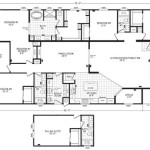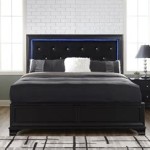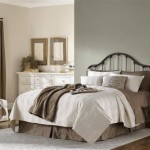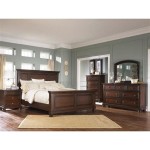How to Decorate a Small Bedroom
Decorating a small bedroom presents unique challenges. Limited space demands careful planning and strategic choices to maximize functionality and create a visually appealing environment. Effective small bedroom design prioritizes space-saving solutions, clever storage strategies, and a cohesive aesthetic that promotes a sense of calm and order. This article will explore key considerations and practical techniques for transforming a cramped bedroom into a comfortable and stylish retreat.
Strategic Furniture Selection
The selection of furniture is paramount in a small bedroom. Overcrowding can quickly overwhelm the space, making it feel smaller and more cluttered. Therefore, opting for multi-functional pieces and scaled-down furniture is crucial. The bed, undoubtedly the largest piece of furniture in the room, deserves particular attention. Consider beds with built-in storage drawers underneath to eliminate the need for a separate dresser or chest. Platform beds without a box spring offer a lower profile, creating a more open feel.
Nightstands should be compact and serve a purpose beyond simply holding a bedside lamp. Wall-mounted shelves can function as nightstands, freeing up floor space. Alternatively, choose nightstands with drawers or shelves for storing books, electronics, or other essentials. Avoid bulky, ornate nightstands that take up unnecessary space.
If a dresser is necessary, opt for a tall, narrow model rather than a wide, low one. This vertical orientation maximizes storage without occupying excessive floor area. Consider placing the dresser in a closet to further minimize its visual impact on the room. In some cases, a chest of drawers might be a more space-efficient alternative to a traditional dresser.
Seating options in a small bedroom require careful consideration. A large armchair can easily dominate the space. Instead, consider a small, lightweight stool or ottoman that can be easily moved around or tucked away when not in use. A window seat, if possible to incorporate, offers both seating and storage. Prioritize slim-profile furniture pieces with clean lines to maintain a sense of openness.
Avoid impulse purchases of furniture items that are purely decorative and lack practical function. Every piece of furniture should contribute to the overall functionality and aesthetic of the room. Before making any purchases, measure the available space accurately and create a floor plan to ensure that the furniture will fit comfortably without obstructing walkways or access to other areas of the room.
Optimizing Storage Solutions
Effective storage is critical in a small bedroom. Maximizing vertical space is a key strategy for keeping the room organized and clutter-free. Wall-mounted shelves are ideal for storing books, decorative items, and other belongings. They create a visual display while freeing up valuable floor space. Consider installing shelves above the bed or along an entire wall to create a focal point and maximize storage capacity.
Closet organization is equally important. Invest in closet organizers, such as shelves, drawers, and hanging rods, to make the most of the available space. Utilize the vertical space in the closet by installing shelves at different heights. Consider using clear storage containers to keep items visible and organized. Over-the-door organizers are a practical solution for storing shoes, accessories, and other small items.
Under-bed storage is another often-overlooked area. Utilize storage containers or drawers specifically designed for under-bed storage to keep bedding, clothing, or other items out of sight. Vacuum-sealed storage bags can further compress bulky items, such as comforters and winter clothing, to maximize space.
Consider using baskets and bins to organize items on shelves or in closets. These provide a visually appealing way to contain clutter and keep belongings readily accessible. Labeling baskets and bins can further enhance organization and ensure that items are easily located.
Think creatively about storage solutions. A trunk at the foot of the bed can serve as both seating and storage. A ladder leaning against the wall can be used to hang blankets or towels. Even the back of the bedroom door can be utilized for storage with over-the-door organizers or hooks.
Enhancing Visual Space with Color, Light, and Mirrors
Color, light, and mirrors play a crucial role in creating the illusion of spaciousness in a small bedroom. Light colors reflect light, making the room feel brighter and more open. Dark colors, on the other hand, absorb light, which can make a small room feel even smaller and more enclosed. Opt for light and airy colors, such as white, cream, pale blue, or light gray, for the walls and ceiling.
While light colors are generally recommended for small spaces, incorporating pops of color can add personality and visual interest. Use accent colors sparingly in the form of throw pillows, artwork, or decorative accessories. Avoid overwhelming the space with too many colors or patterns, as this can create a cluttered and chaotic feel.
Natural light is essential for making a small room feel larger. Maximize natural light by keeping windows clean and unobstructed. Use sheer curtains or blinds to allow natural light to filter into the room while still providing privacy. Avoid heavy, dark curtains that block out natural light.
Artificial lighting is equally important, especially in rooms with limited natural light. Use a combination of ambient, task, and accent lighting to create a well-lit and inviting space. Ambient lighting, such as a ceiling fixture or floor lamp, provides overall illumination. Task lighting, such as a bedside lamp, provides focused light for reading or other activities. Accent lighting, such as wall sconces or picture lights, highlights specific features or artwork.
Mirrors are a powerful tool for creating the illusion of space. A large mirror placed on a wall can visually double the size of the room. Position mirrors strategically to reflect natural light or to create the illusion of depth. Consider placing a mirror across from a window to reflect the view and bring the outdoors in. Avoid placing mirrors in areas where they will reflect clutter, as this will only amplify the feeling of claustrophobia.
Incorporate other visually expanding elements, such as vertical stripes on walls or long, flowing curtains, to draw the eye upward and create the illusion of height. Maintaining a clean and uncluttered space is essential for maximizing the visual impact of light, color, and mirrors.
By carefully considering furniture selection, optimizing storage solutions, and enhancing visual space with color, light, and mirrors, a small bedroom can be transformed into a comfortable, functional, and aesthetically pleasing space. Effective small bedroom design is about making the most of limited space and creating a tranquil and inviting environment.

20 Smart Ideas How To Make Small Bedroom Look Bigger

How To Decorate A Small Bedroom Saatva

Small Bedroom Decorating Ideas That You Ll Love The Nordroom

Small Bedroom Big Style Inspiring Designs For Petite Spaces 1 Fab Mood Wedding Color Haircuts Hairstyles Nails Colours

10 Small Bedroom Design Ideas For Maximum Style And Space

Tiny Bedroom Ideas How To Decorate A Small Room

10 Simple Small Bedroom Decorating Ideas You Ll Want To Copy Neutral Home Design
30 Best Spacious Design Ideas For Small Bedroom Zad Interiors

Small Bedroom Decorating Ideas On A Budget Making Maanita

Small Room Design How To Make Any Larger Nawy








